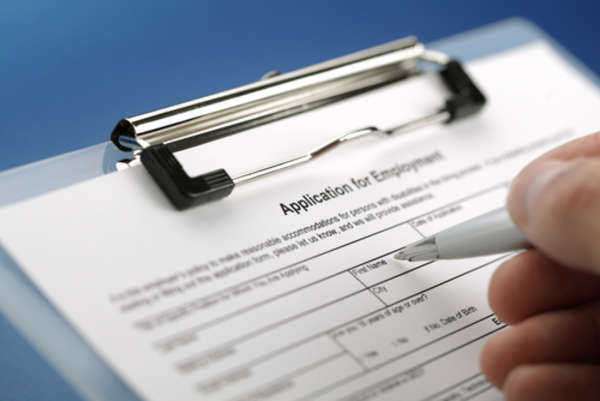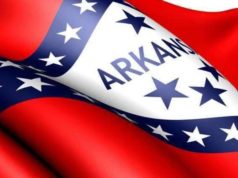
Montana Unemployment: A Comprehensive Guide and Analysis
Introduction
Unemployment is a pressing issue that affects individuals, families, and communities across the United States. Montana, with its unique blend of natural beauty and economic diversity, is no exception. In this comprehensive article, we will delve into Montana’s unemployment landscape, examining key statistics, government resources, and the various programs in place to support individuals during periods of joblessness. Our analysis will be grounded in information from authoritative government sources, ensuring accuracy and reliability throughout.
I. Overview of Montana Unemployment
Montana, often referred to as “Big Sky Country,” is known for its stunning landscapes, vast wilderness areas, and outdoor recreational opportunities. However, like all states, Montana faces economic challenges, and unemployment is one of them. To understand the current state of unemployment in Montana, we turn to the Montana Department of Labor and Industry (DLI), a primary source of data on employment and unemployment trends in the state.
1. Unemployment Rate
The unemployment rate is a key indicator of the labor market’s health. As of our knowledge cutoff date in September 2021, Montana’s unemployment rate was approximately 3.6%. However, it’s essential to check the latest data from the Montana DLI or the U.S. Bureau of Labor Statistics (BLS) for the most up-to-date figures, as these rates can fluctuate due to various factors, including economic conditions and seasonal variations.
2. Industry and Sector Analysis
Montana’s economy is diverse, with significant contributions from industries such as agriculture, energy, tourism, and manufacturing. Examining employment trends within these sectors can provide insights into the state’s economic resilience and vulnerability.
Agriculture: Agriculture has long been a pillar of Montana’s economy, with ranching and farming playing a crucial role. Seasonal variations and market fluctuations can impact employment in this sector.
Energy: Montana is rich in natural resources, including coal, oil, and natural gas. The energy sector contributes to both employment and revenue for the state. However, energy industries can be subject to market volatility and regulatory changes.
Tourism: The state’s breathtaking landscapes and outdoor activities make tourism a significant economic driver. The tourism sector, which includes hospitality, recreation, and entertainment, often experiences seasonal employment variations.
Manufacturing: Manufacturing in Montana encompasses various industries, including aerospace, machinery, and food processing. It provides stable employment opportunities but can also be influenced by economic conditions.
II. Unemployment Benefits in Montana
Unemployment benefits are a crucial safety net for individuals who find themselves without work. In Montana, these benefits are administered by the Montana Department of Labor and Industry’s Unemployment Insurance Division. The state offers financial support to eligible individuals through the Unemployment Insurance (UI) program.
1. Eligibility Criteria
To qualify for UI benefits in Montana, individuals must meet specific criteria, including:
– Being unemployed through no fault of their own.
– Having earned a minimum amount of wages in their base period.
– Being able and available for work.
– Actively seeking suitable employment.
2. Application Process
Applying for UI benefits in Montana typically involves the following steps:
a. Filing an Initial Claim: Claimants can file online through the MontanaWorks portal or by phone. They will need to provide personal information, employment history, and documentation to support their claim.
b. Weekly Certification: Recipients must certify their eligibility for benefits weekly, reporting any income earned during that period. This helps ensure that benefits are appropriately disbursed.
3. Benefit Amount and Duration
Montana calculates UI benefits based on a claimant’s earnings during the base period, which is typically the first four of the last five completed calendar quarters. The maximum weekly benefit amount and the duration of benefits can vary based on individual circumstances. Claimants should consult the Montana DLI or the state’s official website for the latest information on benefit amounts and duration.
III. Montana Workforce Services and Resources
The state of Montana is committed to helping individuals find employment and providing resources to support them during their job search. Here are some key workforce services and resources available to Montana residents:
1. MontanaWorks
MontanaWorks is the state’s comprehensive online job portal, where job seekers can search for job openings, create resumes, and connect with potential employers. Employers can also use the platform to post job listings and find qualified candidates.
2. Job Service Montana
Job Service Montana, a part of the Montana Department of Labor and Industry, offers in-person services across the state. Job seekers can receive assistance with resume building, job search strategies, interview preparation, and access to job fairs and training opportunities.
3. Workforce Innovation and Opportunity Act (WIOA) Programs
The WIOA program in Montana provides funding and resources for job training, education, and support services to eligible individuals. These programs are designed to help individuals acquire the skills and training needed to secure employment in high-demand industries.
4. Vocational Rehabilitation Services
Montana’s Vocational Rehabilitation (VR) program assists individuals with disabilities in obtaining and maintaining employment. VR services include vocational assessments, job placement assistance, and support for skill development.
IV. Challenges and Future Outlook
While Montana’s economy boasts diversity and resilience, several challenges must be addressed to maintain economic stability and support its workforce. As of our knowledge cutoff date in September 2021, some of these challenges include:
1. Seasonal Employment: Montana’s economy is susceptible to seasonal fluctuations, particularly in sectors like agriculture and tourism. Seasonal unemployment can pose challenges for workers who rely on consistent year-round income.
2. Workforce Development: The state must continue investing in workforce development programs to ensure that its residents have the skills needed for high-demand industries. Bridging the skills gap is essential for both job seekers and employers.
3. Economic Diversification: Reducing reliance on volatile industries like energy and enhancing diversification can help stabilize Montana’s economy. This may involve promoting innovation, technology, and entrepreneurship.
4. Addressing Disparities: Montana faces disparities in employment and wages among different demographic groups and regions. Addressing these disparities through targeted policies and initiatives is crucial for ensuring equitable opportunities.
Conclusion
Montana’s unemployment landscape is shaped by its unique blend of industries, seasonal variations, and economic diversity. The state offers vital unemployment benefits and a range of workforce services to support residents during periods of joblessness. However, addressing challenges like seasonal employment and economic diversification is essential for long-term stability and prosperity.
It is crucial to consult authoritative government sources, such as the Montana Department of Labor and Industry and the U.S. Bureau of Labor Statistics, for the most current information on Montana’s unemployment rates, benefits, and workforce services. Montana’s commitment to its workforce and economic development will play a pivotal role in shaping the future of unemployment in the state, ensuring that “Big Sky Country” remains a land of opportunity for all of its residents.
A Guide to Montana Unemployment Insurance
In the first half of the 2000’s, Montana unemployment rate had been steadily decreasing. It was at about 5% in the beginning of 2000, and gradually went down to about 3.1% at the end of 2006. However, 2007 the Montana unemployment rate sharply rose from 3.1% up to 7.8% in August 2012. As of October 2012, the rate has gone down slightly to 7.6%.
Apply for Montana Unemployment Insurance
If you are currently unemployed, you can receive benefits under Montana’s Unemployment Insurance Program, which provides temporary unemployment benefits to eligible individuals who are out of work for reasons that are not their own fault. The purpose of the program is to help keep the economy stable in Montana. You can currently apply for Montana Unemployment Insurance benefits either online or by telephone. If you are planning to file your claim by phone, you should call the Claims Processing Center of your county. You can call between the hours of 8AM to 4:30PM on Monday, Tuesdays, Thursday, or Friday and between 10AM to 4:30PM on Wednesday. You can either call the West Side Helena Center at 406-444-2545 or the Billings Telephone Center at 406-247-1000. If you plan to file your Montana unemployment claim online, you can use the Unemployment Insurance for You Service, or UI4U, located at app.mt.gov/ui4u. Regardless of which method you choose, you will have to provide the following information:
• Name, address, phone number or email address
• Social Security number, or alien registration card number and expiration date for non-U.S. citizens
• Complete employment history of the last 18 months including their names, addresses, and phone numbers
• Bank routing number and account number if you prefer having your benefits directly deposited
• A printed copy of your 1099-G tax form
Eligibility for Montana Unemployment Insurance
In order to be eligible to receive any Montana unemployment insurance benefits, you must meet the following requirements for every week you receive benefits:
• Your wages for the past 12-18 months must be over a certain threshold
• You are unemployed for a eligible reason (lack of work, reduced hours, on the job injury, etc)
• You are both physical and mentally able to work and are available to do so each week
• You actively look for new employment each week
• You are a U.S. citizen or you are legally allowed to work in the country.
• You have enough wages for an eligible unemployment claim
How to Maintain Montana Unemployment Insurance
The maximum unemployment insurance benefits payable under normal circumstances in Montana cannot exceed 28 weeks. However, during times of high unemployment, extended benefits are available from the Federal government . If you are eligible for these programs while you are receiving unemployment insurance benefits, you will already be notified of this though the mail. It will explain how to file a claim for the benefits provided under the Emergency Unemployment Compensation program and the Extended Benefits Program. You can go to ui4u.mt.gov to check your unemployment insurance benefit status online. However, at the end of 2011 and the beginning of 2012, both programs will be slowly phased out in Minnesota. Contact Montana lawyers for legal advice and assistance.







































